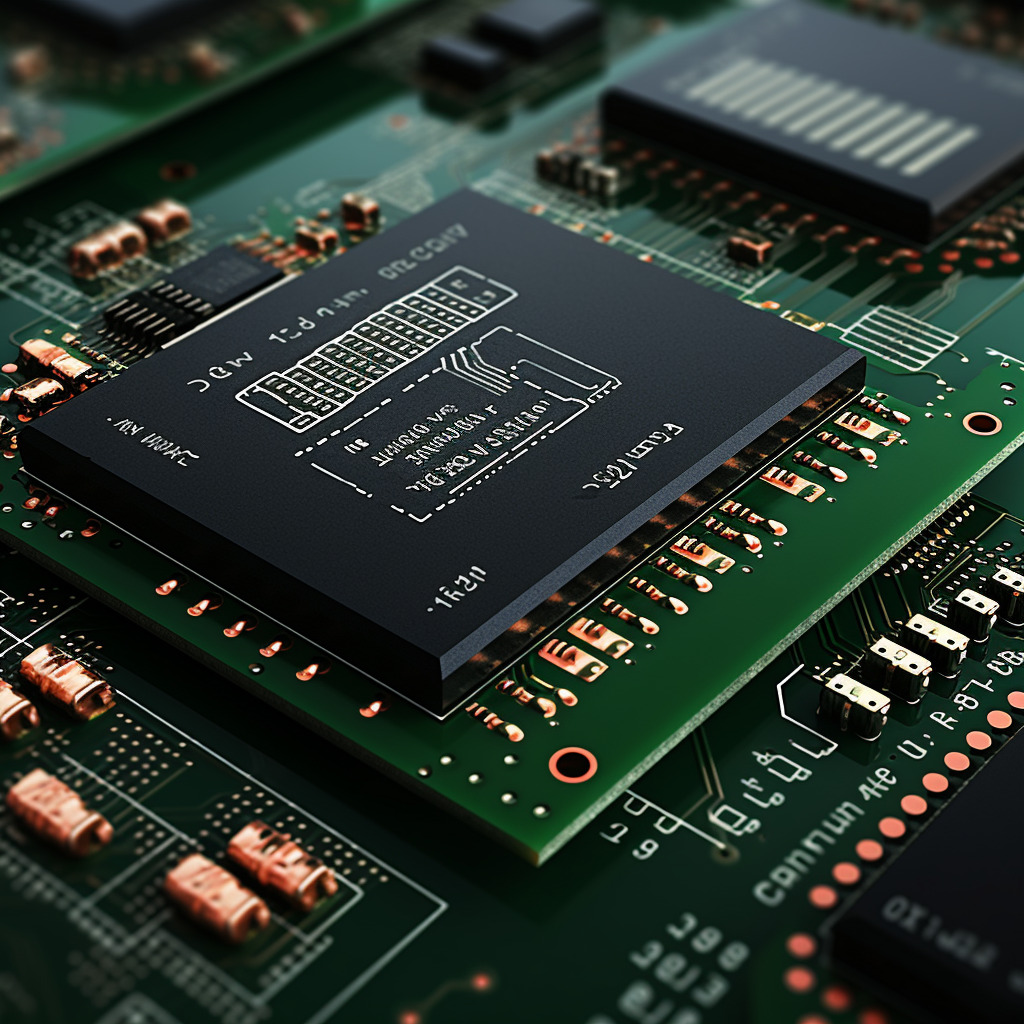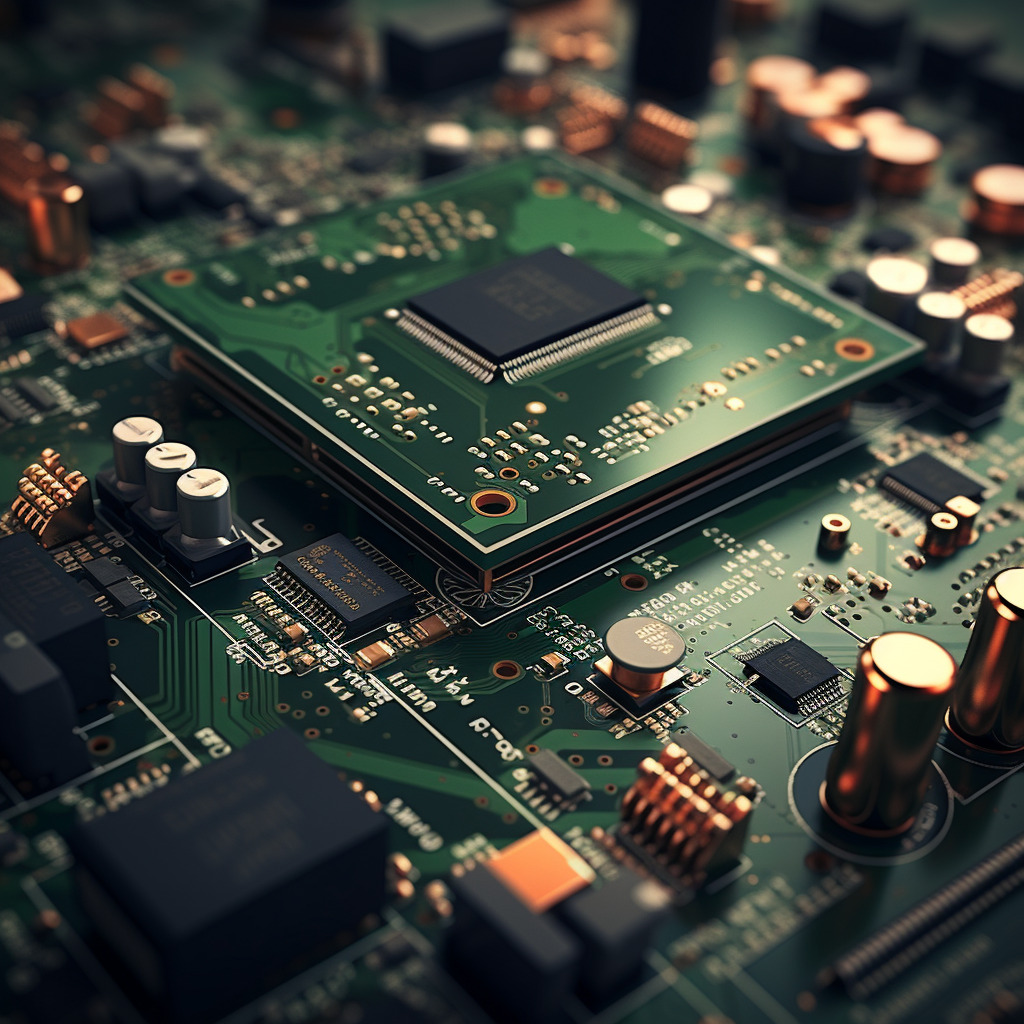Time: 2024-01-23 15:21:51View:

Surface Mount Technology (SMT) revolutionizes the production of electronic circuits by directly mounting components onto printed circuit boards (PCBs) instead of using holes for insertion. This method has surpassed through-hole technology due to its ability to accommodate smaller components, achieve higher component density, and streamline assembly processes.
SMT utilizes significantly smaller components compared to their through-hole counterparts, allowing for more compact and lightweight electronic devices. This miniaturization has been instrumental in the development of portable electronics like smartphones, tablets, and wearable devices. Moreover, SMT permits higher component density on PCBs by placing components on both sides of the board and in closer proximity. This increased density has facilitated the creation of more powerful and feature-rich electronic products.
The assembly process for SMT involves specialized equipment such as pick-and-place machines and reflow soldering ovens. These machines automate the precise placement and soldering of components onto the PCB, leading to enhanced manufacturing efficiency, reduced labor costs, and increased production throughput. Additionally, SMT has enabled the utilization of advanced packaging technologies like ball grid array (BGA) and chip-scale packaging, which offer improved electrical performance and thermal characteristics.
Ultimately, Surface Mount Technology has transformed the electronics industry by enabling the production of smaller, more powerful, and more intricate electronic devices. Its widespread adoption has spurred innovation in product design, manufacturing processes, and the capabilities of electronic systems, making it an indispensable technology in the modern world.
Surface Mount Technology (SMT) is a method used to produce electronic circuits by mounting or placing components directly onto the surface of printed circuit boards (PCBs). This process has become the dominant approach for manufacturing PCBs due to its numerous advantages over traditional through-hole technology.
The SMT process begins with a bare PCB, which is typically made of a non-conductive material like fiberglass or composite epoxy. The PCB contains conductive traces and pads that serve as connection points for the electronic components. These traces and pads are usually made of copper and are etched onto the surface of the PCB.
The first step in the SMT process is the application of solder paste. Solder paste is a sticky mixture of tiny solder particles suspended in a flux. The paste is applied to the PCB using a stencil that contains cutouts corresponding to the component locations. The stencil is aligned with the PCB, and the solder paste is spread over the cutouts, transferring the paste onto the PCB surface through the openings.
Once the solder paste is applied, the components are placed onto the PCB using specialized equipment known as pick-and-place machines. These machines use vacuum nozzles to pick up the components from a reel or tray and precisely position them onto the solder paste on the PCB. The pick-and-place machines have high accuracy and speed, allowing for efficient component placement.
After the components are placed on the PCB, the assembly goes through a process called reflow soldering. In reflow soldering, the PCB is heated in a controlled manner, typically in a reflow oven. The heat causes the solder paste to melt and form a liquid state. As the solder cools down, it solidifies, creating a strong electrical and mechanical bond between the components and the PCB pads.
During the reflow soldering process, the temperature is carefully controlled to prevent damage to the components. Different components may have specific temperature profiles, and the reflow oven is programmed accordingly to ensure proper soldering without causing any thermal stress or component failure.
Surface Mount Technology offers several advantages over through-hole technology. Firstly, it allows for the use of smaller components, which enables the miniaturization of electronic devices. Secondly, SMT enables a higher component density on the PCB, as components can be placed on both sides of the board and in closer proximity to each other. This increased density contributes to the development of more powerful and feature-rich electronic products.
Moreover, the SMT process is highly automated, thanks to the use of pick-and-place machines and reflow soldering ovens. This automation improves manufacturing efficiency, reduces labor costs, and increases production throughput. It also enables the use of advanced packaging technologies like ball grid array (BGA) and chip-scale packaging, which offer enhanced electrical performance and thermal characteristics.
In summary, Surface Mount Technology involves the mounting of electronic components directly onto the surface of printed circuit boards using solder paste and reflow soldering. This process allows for smaller components, higher component density, and automated assembly, making it the preferred method for manufacturing electronic circuits.
Next, I will sequently discuss the advantages and disadvantages of Surface Mount Technology.
Surface Mount Technology (SMT) offers several advantages and disadvantages compared to traditional through-hole technology. Let's explore each of them in detail.
1. Enhanced Miniaturization: Surface Mount Technology (SMT) allows for the utilization of significantly smaller components in comparison to through-hole technology. This capability of miniaturization has played a pivotal role in the advancement of smaller and more portable electronic devices like smartphones, tablets, and wearable devices. The reduced size and weight of these devices make them more convenient for everyday use.
2. Increased Component Density: SMT enables a higher component density on printed circuit boards (PCBs). As components are directly mounted onto the surface of the PCB, they can be placed on both sides of the board and in closer proximity to one another. This augmented density translates into more functionality and power in a smaller space, leading to the creation of more powerful and feature-rich electronic products.
3. Enhanced Electrical Performance: SMT offers improved electrical performance when compared to through-hole technology. The shorter connections and reduced parasitic capacitance and inductance in SMT designs result in faster signal propagation and better signal integrity. This advantage is particularly crucial in high-frequency and high-speed applications, where precise and reliable signal transmission is essential.
4. Automated Assembly: The SMT process is highly automated, thanks to specialized equipment such as pick-and-place machines and reflow soldering ovens. These machines automate the precise placement of components onto the PCB and the soldering process. Automation enhances manufacturing efficiency, reduces labor costs, and increases production throughput. It also minimizes human error, resulting in higher reliability and consistency in the assembly process.
5.Cost-Effective Manufacturing: SMT has become the dominant method of manufacturing PCBs due to its cost-effectiveness. The automated assembly process reduces labor costs, and the higher component density allows for more functionality in a smaller physical footprint. Additionally, SMT enables the use of advanced packaging technologies like ball grid array (BGA) and chip-scale packaging, which offer improved electrical performance and thermal characteristics without significantly increasing manufacturing costs.

1. Complex Rework and Repair: Surface mount components in SMT technology are smaller and have a higher component density, making rework and repair more challenging compared to through-hole components. Specialized tools and techniques are required for soldering and desoldering these small components, and there is a higher risk of damaging nearby components or PCB traces. Repairing SMT assemblies often demands advanced skills and equipment, which can result in increased maintenance costs.
2. Design Constraints: SMT imposes specific design constraints on PCB layouts. Precise placement of components considering their size, orientation, and thermal considerations is necessary. Attention must be given to heat dissipation and thermal management, as densely packed components can generate more heat and may require additional cooling measures. Designers must carefully consider these constraints during the PCB layout stage to ensure optimal performance and reliability.
3. Higher Initial Setup Costs: Implementing SMT technology requires initial investments in specialized equipment like pick-and-place machines, reflow soldering ovens, and stencil fabrication. These setup costs can be relatively high, particularly for small-scale or low-volume production. However, for larger-scale production, the cost savings from automated assembly and improved efficiency often outweigh the initial setup costs.
4. Component Availability and Obsolescence: The rapid pace of technological advancements may render certain SMT components obsolete or difficult to obtain over time. As newer and more advanced components are introduced, older components may be discontinued, posing challenges for long-term product support and maintenance. Manufacturers need to consider component availability and lifecycle management during the design stage to mitigate potential issues.
In general, Surface Mount Technology provides notable benefits in the areas of size reduction, increased component concentration, enhanced electrical functionality, automated assembly, and economical production. Nevertheless, it also poses certain difficulties including intricate rework and repair processes, design limitations, higher initial setup expenses, and concerns regarding component availability. Having a comprehensive understanding of these pros and cons is crucial in order to make well-informed choices when choosing the suitable manufacturing technology for electronic circuits.
Surface Mount Technology (SMT) and Through Hole Technology are two different methods of mounting electronic components onto printed circuit boards (PCBs), each with its own set of advantages and disadvantages. Let's explore the differences between the two in more detail.
Through Hole Technology, as the name suggests, involves inserting component leads into pre-drilled holes on the PCB and then soldering them to pads on the opposite side. This method has been widely used for many years and is known for its robustness and reliability. Through-hole components have sturdy leads that provide mechanical strength and can withstand mechanical stress and vibration.
On the other hand, Surface Mount Technology involves mounting components directly onto the surface of the PCB, without the need for drilled holes. SMT components have small metal or conductive pads called surface mount devices (SMDs) that are soldered onto corresponding pads on the PCB. SMT has gained popularity due to its ability to accommodate smaller components, achieve higher component density, and streamline the manufacturing process.
One of the main advantages of SMT over through-hole technology is miniaturization. SMT components are significantly smaller than their through-hole counterparts, enabling the design and production of smaller and more compact electronic devices. This has been instrumental in the development of portable consumer electronics, where space and weight are critical factors.
Moreover, SMT allows for higher component density on PCBs. Since components are mounted directly onto the surface of the PCB, they can be placed on both sides of the board and in closer proximity to each other. This increased density translates into more functionality and power in a smaller space, making SMT ideal for high-density applications such as advanced microprocessors, memory modules, and complex electronic systems.
In terms of manufacturing efficiency, SMT offers significant advantages. The process is highly automated, with specialized equipment like pick-and-place machines and reflow soldering ovens. These machines automate the precise placement and soldering of components onto the PCB, reducing labor costs and improving production throughput. On the other hand, through-hole assembly often requires manual insertion and soldering, which can be time-consuming and labor-intensive.
However, through-hole technology also has its merits. Through-hole components provide mechanical robustness and are better suited for applications that involve mechanical stress or require high reliability. They offer better resistance to mechanical forces and are less likely to break or detach from the PCB. This makes through-hole technology preferable for applications subjected to harsh environments, such as automotive and aerospace industries.
Additionally, through-hole technology allows for easier rework and repair. If a component needs to be replaced or modified, it can be desoldered from the PCB and a new one can be inserted in its place. This flexibility makes through-hole technology more suitable for prototypes, small-scale production, or situations where design changes are likely to occur.
In summary, Surface Mount Technology (SMT) and Through Hole Technology each have their own strengths and weaknesses. SMT offers advantages in terms of miniaturization, higher component density, and automated assembly, making it suitable for high-volume production and compact electronic devices. Through-hole technology provides mechanical robustness, easier rework, and better suitability for applications subjected to mechanical stress. The choice between the two depends on the specific requirements of the application, desired level of miniaturization, manufacturing scale, and environmental considerations.